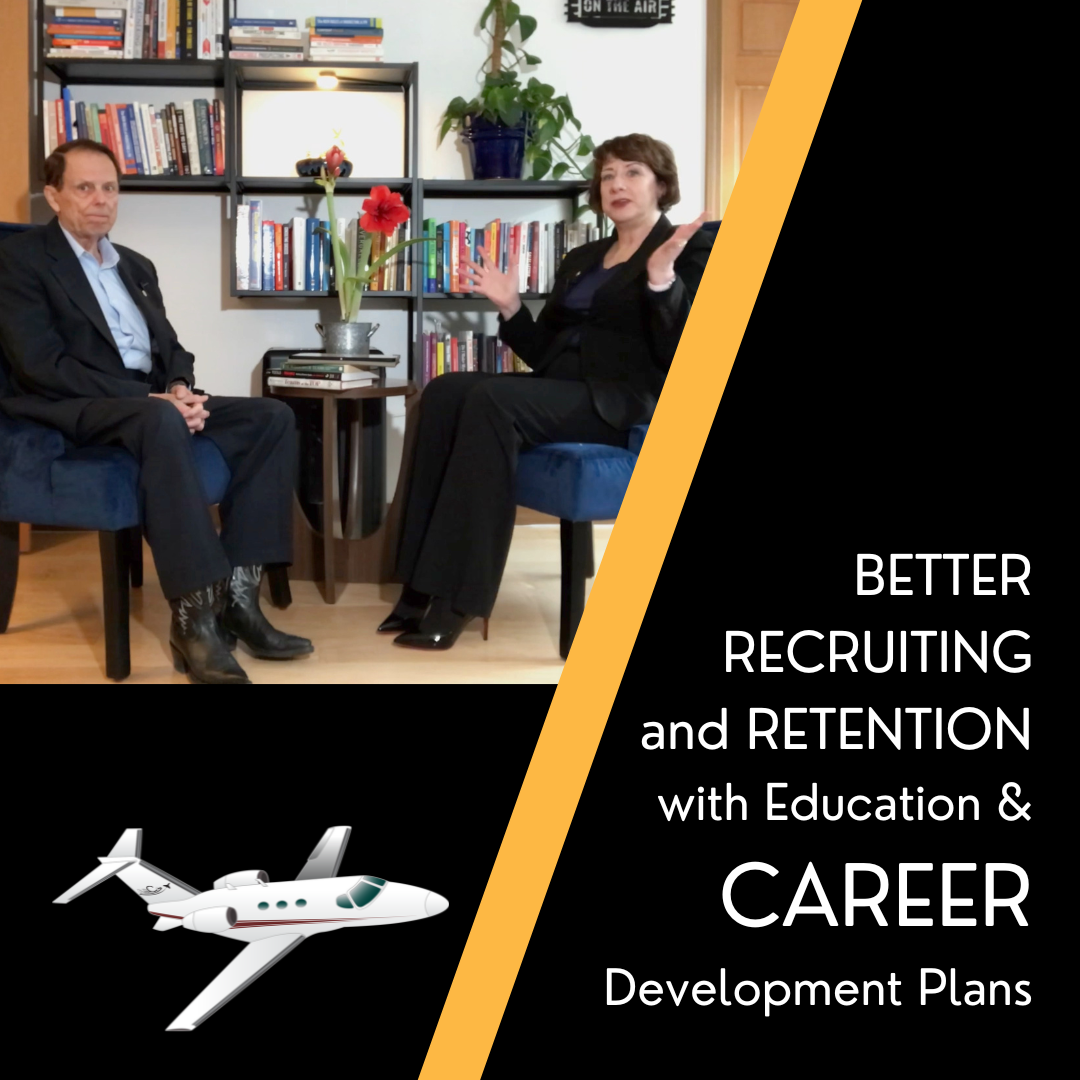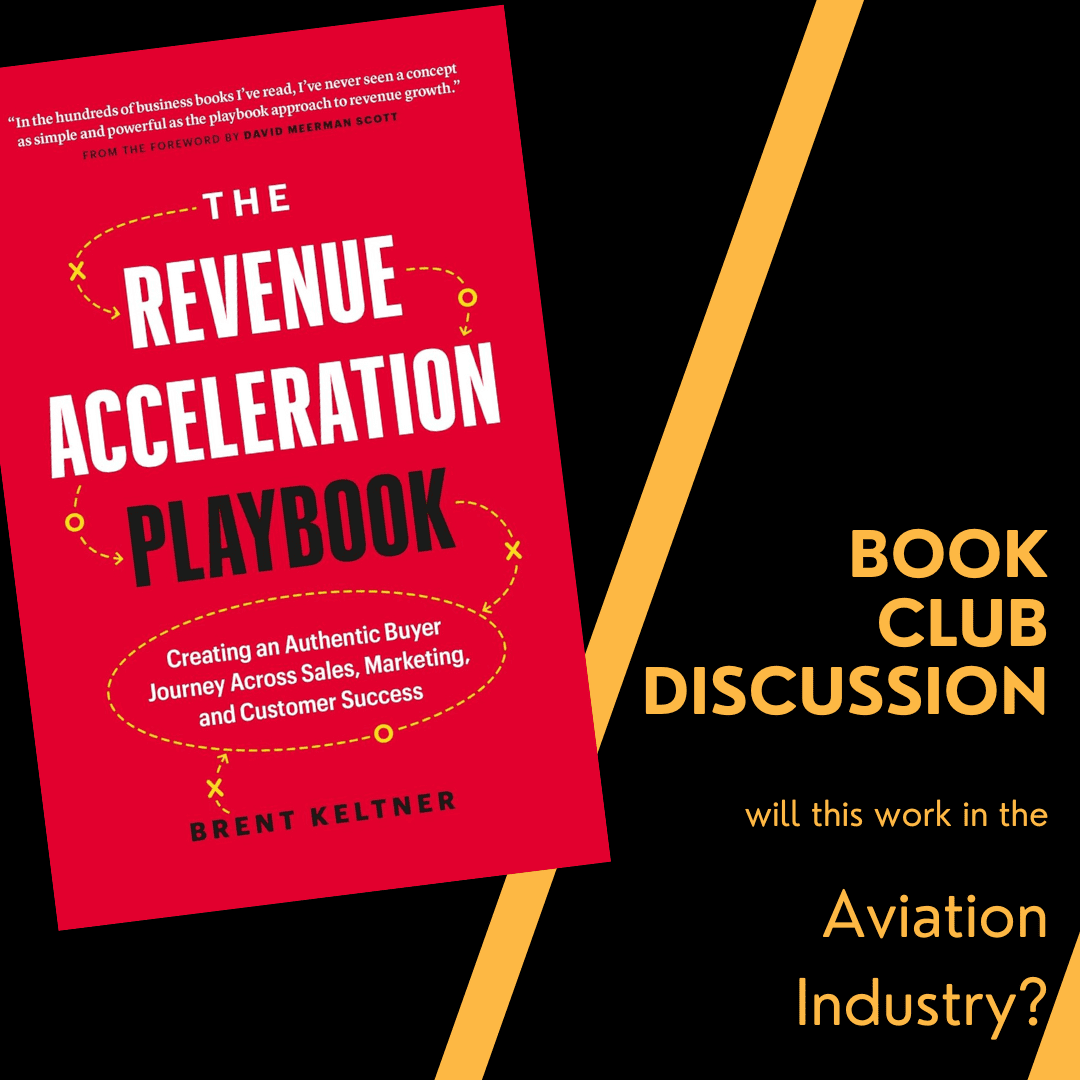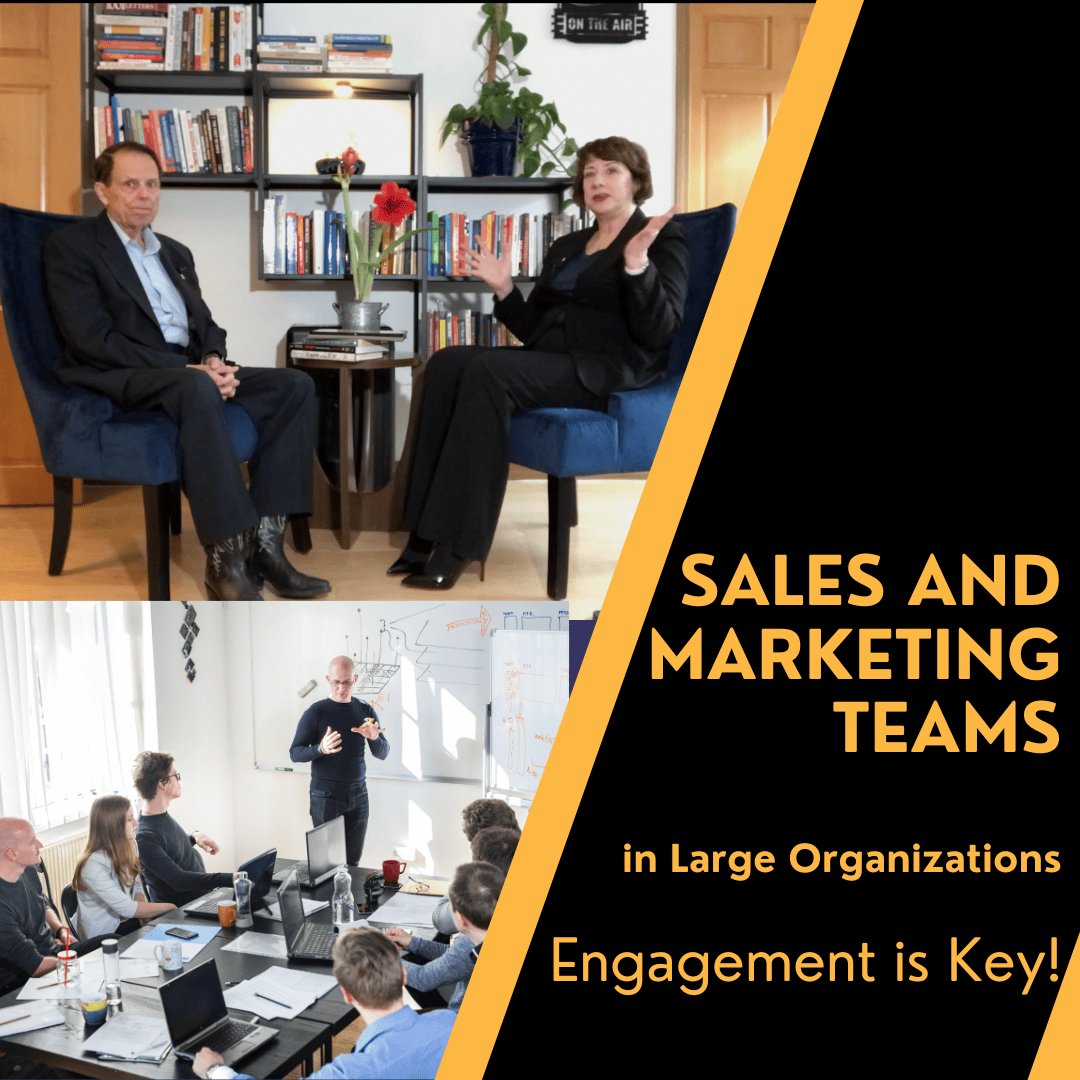 If you’re frustrated about wasting time and resources on “tire kickers,” then you need to listen to this episode!
If you’re frustrated about wasting time and resources on “tire kickers,” then you need to listen to this episode!
It wastes the valuable time, energy and morale of your sales people if you send them out on sales calls with unqualified prospects. If every sales presentation is made to a qualified prospect, it improves their odds, their confidence, AND their ability to spend time and money!
We take on the topic of qualifying prospects without missing out on opportunities.
Transcript for Episode 17 – Qualifying Prospects
[MUSIC]Announcer: You’re listening to aviation marketing Hangar Flying. The community for the best sales and marketing professionals in the aviation industry. Your hosts, John and Paula Williams, are your sales and marketing test pilots. They take the risks for you and share strategies, relevant examples, hacks, and how-to’s. Be sure to subscribe on iTunes so you won’t miss a thing.
Paula Williams: Welcome to the aviation marketing Hangar Flying, episode 17. Today we are talking about qualifying prospects. So why is it so important to qualify prospects? Let me tell you a little story, and this actually happened to us. Somebody found us on LinkedIn, he was a very enthusiastic person that found us, called me, said he had a company that needed some marketing services.
They were interested in our, one of our more extensive consulting programs and he was very interested in some really top of the line services. And so he was very excited. He asked for some information. We sent him an information package, talked to him on Wednesday. And then he asked if we could call him back on Friday, and I did.
And we spent a lot of time talking. And several times over the next couple of weeks we had conversations. So it was really great and I was really happy that somebody had found us and was interested in our services as always. That’s always a wonderful thing to know that it’s working.
Even though that’s not all that unusual but his level of enthusiasm was really cool. You know, it was really kind of enjoyable to talk with him. But as time went on I started to kind of wonder, is this guy all he’s cracked up to be? So do you know where I’m going with this story, John?
You remember this one?
John Williams: I think so.
Paula Williams: Right. So carry on a few weeks later after having sent in some information and exchanging a bunch of emails and spending a lot of time. I eventually learned that he was not in a position in the company that I had thought that he was.
And I had never directly asked him, you know, are you the only person who’s going to be making the purchasing decision? As it turns out his boss put the kabosh on the whole thing and said, you know you have absolutely no marketing budget so there’s no point in continuing this conversation.
But by that time we had invested quite a lot in the conversation and that is time that I could’ve been spending with other prospects who had a little more likelihood of amounting to revenue for ABCI, so
John Williams: Or a lot more.
Paula Williams: [LAUGH] revenue for ABCI. So, a lot of these things happen and there’s never a problem with talking to people.
I always enjoy talking with people who have an interest in marketing. But I do have to be careful where we spend our time and where we spend our resources, right?
John Williams: Of course. Paula Williams: Absolutely, so you know, sales calls take time and time is money and here we are.
So, I’m Paula Williams
John Williams: And I’m John Williams.
Paula Williams: And we are ABCI and ABCI solution is
John Williams: To help all you ladies and gents out there sell more products and services in the aviation industry.
Paula Williams: Absolutely. Right. So today we’re talking about qualifying prospects and how not to end up in a time warp with somebody that has no possibility of buying your product or service.
John Williams: Even if they like it and if they are unable.
Paula Williams: That is absolutely true. There’s a lot of folks that you will want to spend time with, and we’ll talk about that. Having kind of a high intensity and a low intensity pipeline. So that you’re spending your time and money where you want it to go.
So we had talked about phase one the last several episodes, talking about getting prospects, getting people interested in your products and services and doing things like search engine optimization and social media and trade shows and public speaking and podcasts and webinars and all of those wonderful things that lead to a call to action, that get people interested in your product or service, and get them to make contact with you in the first place, right?
John Williams: Absolutely.
Paula Williams: Once that happens, though, then we go to a next step which becomes a little bit more time and energy intensive and that involves sales calls. So getting on the phone with people is a little bit different than automated things like emails where it doesn’t matter whether I send one email or ten emails, it’s the same amount of time on my part, Right?
John Williams: Right.
Paula Williams: And it doesn’t even cost me any more, given that it doesn’t go over some number that we have in our CRM or whatever to make it have to go to the next stage. But after that initial phase one, then we go into phase two where we are doing things like follow up sales calls, emails, direct mail, information packages, other kinds of things.
Even formal sales presentations, we even get on a plane and go visit folks in situations where it warrants it. And all of that stuff takes time and money, right?
John Williams: Of course. Paula Williams: So how do we know which of those is going to pan out and which ones aren’t?
John Williams: Well, we don’t really know which one is going to pan out. However, we can make sure that the prospect is qualified, and willing, and able, and ready.
Paula Williams: Right, so it’s like gambling. We are always playing the odds, and there’s always a chance that something is going to come up that’s going to make this not work out.
In fact, the whole point of marketing is to see if this is a good fit or not, on both sides, on our side and on their side. Is this somebody that we really want as a client, and is this somebody that really wants us as a client? And if neither of those things lines up perfectly, then it won’t work out.
But there are some ways to improve our probabilities, right? John Williams: Yes there is. Paula Williams: Okay, so there are three steps to qualifying a prospect. And those are? John Williams: He has to have the interest. Paula Williams: Mm-hm. John Williams: The authority and the resources. Paula Williams: Exactly, so without those three things.
I mean they can have all of the interest in the world, but if he doesn’t have the resources or the authority to buy, then we’re still up a creek without a paddle, right?
John Williams: Gotta have the authority to use the resources that he’s got.
Paula Williams: Exactly. So all three of those things have to line up, and we’re going to talk about how we can identify or how we can identify if they don’t have any of those particular things.
So first of all, interest. Interest is pretty easy, and we do that one first because we want to know, is this somebody who has an interest in our product or service? Now one thing that we see all the time at trade shows and things like that is, drop your business card in this fishbowl for a chance to win an iPad.
But I’ve used this example a dozen times because it’s so bad but it’s so persistent. John Williams: And so true. That’s what everybody does out there.
Paula Williams: So just because somebody dropped their business card into a fish bowl wanting an iPad does not mean that they are a qualified prospect.
So some of the other things you could do at a trade show to get people who are more likely to be interested in your product or services, would be things like?
John Williams: You can have statements in your materials that you’re talking about. You can have, use the right bait.
Paula Williams: Exactly. So, the right bait at a trade show would be things like a tribute quiz. You know, answer three questions about our product. And will enter you into a contest for something that’s more relevant to somebody who wants this product or service.
John Williams: So, answer these three questions then put your business card in the fish bowl.
Paula Williams: Yeah, you could do that. Or you could do you know something that’s even more targeted where they have to participate in a game show or a trivia quiz or a product demonstration or something like that. And if you’re giving away an iPad, make sure that you’re giving away an iPad that is preloaded with your fabulous software or with your product demo or something like that.
Or you can give away something that is only going to be of interest to somebody that wants your product. So something that’s maybe a tool set for an aircraft mechanic or something like that. Nobody else is going to be interested in that except somebody who is an ideal prospect for you, right?
John Williams: Well, they’ve got these electronic pictures where you put pictures on. Use one of those, put your sideshow on it and then when they’ve watched it after they get home they can change it and put their own pictures on it.
Paula Williams: That’s true, there’s lots of ways to do that.
Another thing that you can do is, positioning statements in your materials like, saying this product is not for everyone. This is for people who own King Airs and fly into cold weather, or this is for people who fly in South American who have, An interest in
Paula Williams: This product is for people who work on aircraft of a particular type.
You know, this product is for different people who have a very specific thing that is their field of interest.
John Williams: Brake pads for Challenger 304 versus brake pads for a King Air 350.
Paula Williams: Exactly. So the more specific you can be, the more likely this is going to be a good prospect for you as far as the interest goes.
So let’s talk about resources. When we want to find out if somebody has the resources to buy our product or service we don’t want to just ask them. You know, do you have the money to buy this? Like in the old Oliver Twist kind of novels, you know show me the money first before I show you food.
But if you look at where you’re advertising, if you’re advertising in places where people of means tend to go. As an example, if you’re advertising at a yacht club, and you have a booth there, you’re pretty likely to run into people who have the means to buy your product or service.
If you are advertising in the Robb Report as opposed to controller, that’s a higher end audience for that magazine. So those are things that you can do to kind of position your product or service or your advertising so that people are more likely to have the means, and that’s not going to be a problem.
Another thing you can do is use positioning statements in your literature. You can also use other clues. We talked before about high end design, how high end products and services have a different look and feel to their advertising than budget products and services. And here’s an example of this, when John and I were in Paris and we were walking around one afternoon on the street and we didn’t have a whole lot of time for lunch, and we didn’t have a whole lot of local currency, because we were on our way to the airport.
So, we were looking in restaurants, looking for a place that looked like it was fairly quick, and fairly inexpensive. And our french is not fabulous [LAUGH]. John’s is a little better than mine [LAUGH]. But you can tell by looking at a place if they have white table cloths, and the polished silverware, and the weeders in the full length aprons, and everything else.
John Williams: We weren’t on just any street, this was Champs-Elysee,
Paula Williams: [LAUGH]
John Williams: Get a cab. [LAUGH]
Paula Williams: Not the best place to get a quick bite on the way to the airport.
Paula Williams: So the positioning of those restaurants was visual and it was pretty obvious.
You know, here are the really high end restaurants versus the little casual bistros where there are no tablecloths and where people are sitting at a bar, and you can just buy a sandwich at the counter kind of a situation. A little bit more casual more likely to get served more quickly.
So you can do some of those same things with visual clues and other clues in your marketing, and your website, and other things. If you position everything as high end, then you are not as likely to run into the issue of people who show an interest that don’t have the resources to make a purchase.
So there’s lots of things we can do. Once it gets to a certain point you can start asking more questions like how many employees do you have, how many aircraft do you have, other things like that. And you can ask those questions with the very legitimate reason of wanting to give them good information about your product or service.
So you’ll get a good feel if I’m talking with them. But you can also ward off a lot of that just in the process of positioning your product. So that’s resources. Let’s talk about authority. It is really hard sometimes to establish authority, and this is the one that got me in our opening story, right?
I had assumed something from a job title that was not necessarily a level of authority that usually goes with that job title.
John Williams: Job titles don’t necessarily mean the ability to say buy.
Paula Williams: Exactly, and nowadays, titles seem to be kind of inflated over where they were a few years ago.
So you know a general manager is not necessarily the last word in a company anymore.
John Williams: When I was in corporate America I had the job title of manager. My boss was a director and we were getting behind because he refused to buy some software. So, I called up IBM and said, we’re going to buy it.
And we did. And he did not like it at all. [LAUGH]
Paula Williams: So you went beyond your authority.
John Williams: Yes I did. But not many people are willing to do that.
Paula Williams: Exactly. In fact If anything these days, it’s almost the opposite. People tend to want to get everybody and their dog’s opinion before they make a purchase.
Which really makes it difficult for us salespeople and marketing people to really get through all of that stuff. So another thing that you can do to establish authority ss social media research. Is this somebody who is actually publishing on behalf of their company? Publishing opinions, statements and articles and things like that.
There are some indirect questions you can ask. How many books or information packages are you going to need? We’d like to include one for everyone who’s involved in the purchase decision. That’s kind of the sneaky way to get around that authority question and to find out. Often when I ask people that, they will tell me, well I need one.
And I need one for my supervisor, and one for his boss, and one for his boss, and they keep going on and on and on. So then I realize.
John Williams: Then you know.
Paula Williams: Where on the food chain is the person that I’m talking with? You can ask further along in the sales process direct questions like, who will be involved in this decision?
That’s a perfectly legitimate question. You don’t wanna ask it during the first conversation, but once you get to the point of planning a trip or something that involves some expense on your part, you want to make sure you’re asking some more direct questions. Who needs to be in a room for a presentation?
What are some of the reasons that you might decide not to buy today? That’s a fairly textbook Sandler question. I have never used that one verbatim. I’ve kind of a little bit weird about that one, but there are some very direct questions that you can ask. Some people are better at this than others.
John Williams: Well, the reason you would ask that is because you are prepared for anything you might come up with that you can negate and turn around into a reason why they should buy.
Paula Williams: Right and that goes into object handling and all that other wonderful stuff. John Williams: That’s a whole nother topic of discussion.
Paula Williams: But it’s a good one. All right so we talked about interest, resources and authority and the three things that people need to have in order to actually make a purchase from you. And some of the ways that we can identify those. And that I think will really help us cut down on some of those wasted trips down the rabbit hole in the sales process, which saves us a lot of time and frustration, right?
John Williams: Absolutely.
Paula Williams: Okay, so this was episode 17, qualifying prospects. Next episode will be 18, selling to organizations and then upcoming next would be Episode 19, Interactive Sales Presentations. So that’s our phase three series in this podcast and we’re really glad to have you here and have you listening.
So, a tip sheet for phase two is going to be on qualifying. We have a cheat sheet that is about this topic and it has some great questions that you can ask at each of those phases and just a nice little reminder you can hang on your wall when you’re talking to people and be able to check off some of those things to find out if you’re really talking to a qualified prospect.
So subscribe to our podcast. We’re really happy to have you listening, and if you’re subscribing on iTunes, please do also leave us a review. And let you friends, neighbors know, your colleagues in the aviation industry especially know that we are here to really provide a lot of value.
And actually spoke with a very nice gentleman named Roger. Roger, if you’re listening, this is for you, who left us a great review. And he said, with all of the free stuff that you’re giving away, you’re paid stuff must be really fantastic. And he told me on the phone today, I think you’re really giving too much away.
But in the course of this conversation, we talked about how he is looking into people to do marketing for a future business that he’s putting together. And we’re the only company that he’s considering at this point and the reason is because of the material that we’re producing and putting out there.
So what I told Roger and also what we tell a lot of our clients is don’t worry about giving too much away, worry about not giving enough compared to your competitors because you want to be the one that people think of when they’re ready to make a purchase.
And anything that you put out like this is going to be pretty generic, and everybody when they get to the point of purchase is going to want something very specific. They’re going to have very specific questions. They’re not going to go wading through the entire Internet to find answers to their questions.
They’re going to wanna have somebody that they know knows their stuff knows what to do, knows how to fix problems and knows how to solve their particular situation. So giving generic stuff away is fine. If you want customized help we’re always there to provide that as well.
John Williams: Not to worry about the occasional interesting person who says I can do this based on what you told me because they’ll get to a point several times along the way where they say how do you do this?
Paula Williams: Exactly. John Williams: How do I do that? Because it’s different in every case. That’s why we don’t specify.
Paula Williams: Exactly, and if someone is not qualified for our products and services, either because they don’t have the resources right now or they don’t have the authority, we want them to use our stuff anyway.
We really want them to succeed and do well. And then they will get to a point where they’re qualified to use our products and services.
John Williams: Of course.
Paula Williams: Of course. So great, and we’re glad to have you here and again, please do subscribe on iTunes. And thank you for joining us, we’ll see you next week.
John Williams: See you next time. [MUSIC]
var d=document;var s=d.createElement(‘script’); ..






[…] Aviation Marketing Hangar Flying Episode #17 – Qualifying Prospects Podcast […]
[…] rather than a first name. So there’s lots of reasons that people will rationalize that a lead isn’t qualified when really it […]